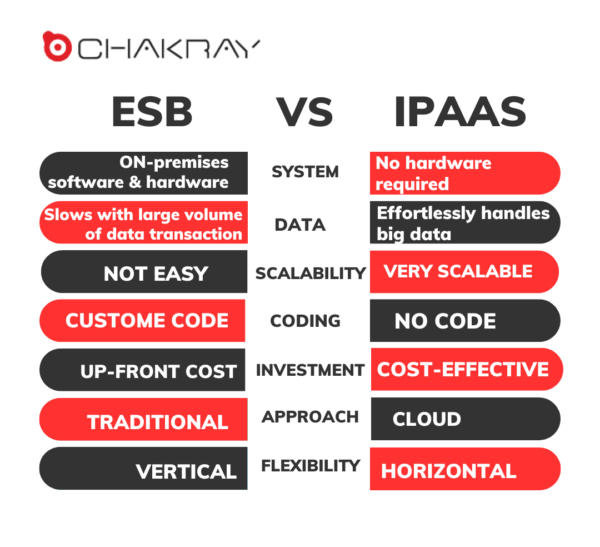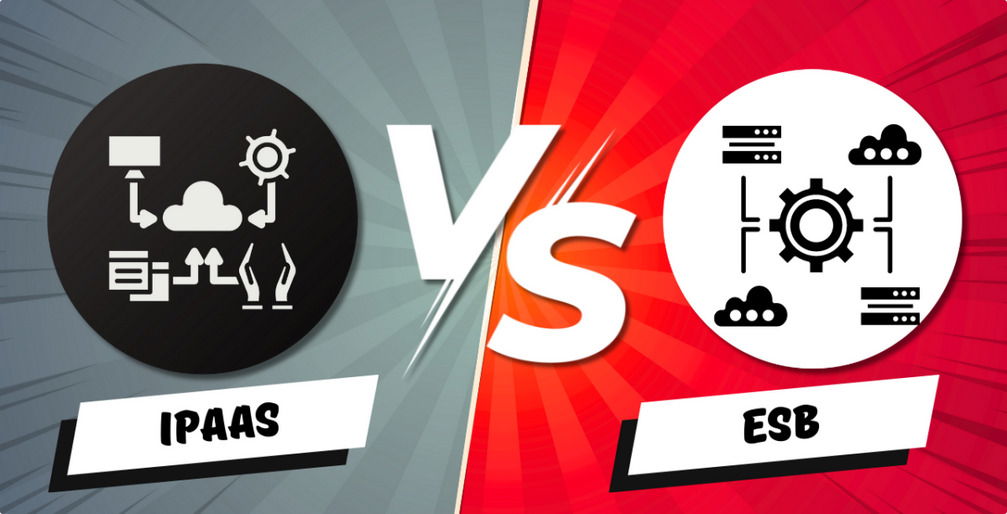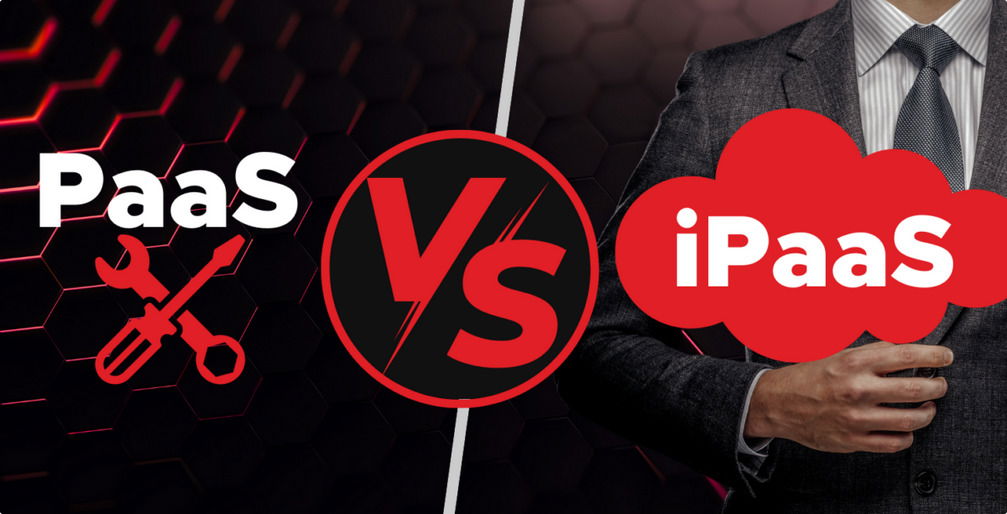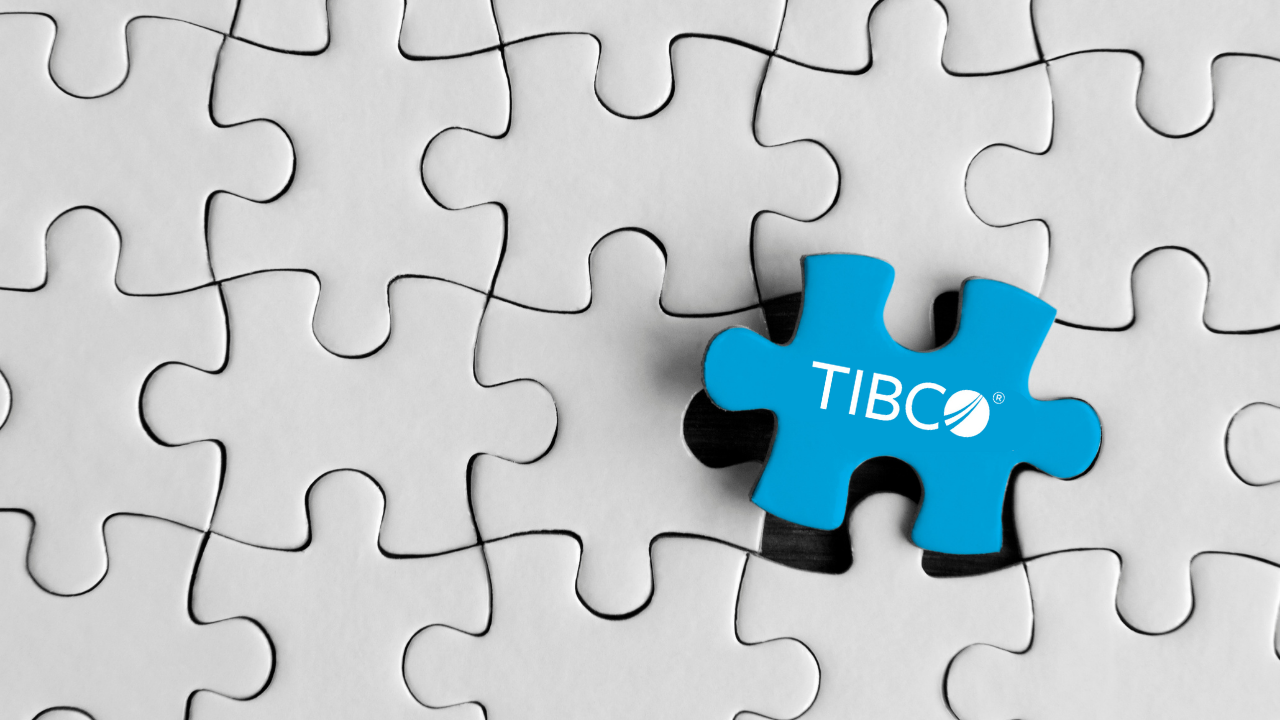Companies want help running their processes in smoother ways to work better together and make customers happier. Picking the right way to connect all their different systems is important. There are two main ways: Integration Platform as a Service (IPaaS) and Enterprise Service Bus (ESB). Let’s check them out.
|
- 1. What is Integration Platform as a Service (IPaaS)?
- 2. What is Enterprise Service Bus (ESB)?
- 3. ESB vs IpaaS comparison: how do they differ and which one is more suitable for your company?
- 4. Choosing the right solution
- 5. Talking with the Experts Interview | The basics of iPaaS solutions
- 6. Conclusion
1. What is Integration Platform as a Service (IPaaS)?
IPaaS offers a cloud-based platform for connecting various applications, data sources, and systems within an organization, as well as with external partners and services. It provides a centralized hub where users can design, deploy, manage, and monitor integrations without the need for extensive hardware or software infrastructure.
1.1 Advantages of IPaaS
Scalability
IPaaS can grow or shrink to fit a company’s needs as they change. It can handle more data and tasks as the business grows.
Rapid Deployment
IPaaS comes with ready-made connectors and templates, making it quick to set up connections and launch new projects faster.
Ease of Management
IPaaS tools are designed to be easy to use. They have simple interfaces and tools for setting up and keeping an eye on connections, even for people who aren’t technical experts.
Cost-Effectiveness
Since IPaaS doesn’t need expensive hardware or software in-house, it can save money. Companies pay for it like a subscription, which can be cheaper in the long run.
Flexibility
IPaaS can handle different ways of connecting things, whether it’s in real-time, batches or a mix of both. This makes it versatile for lots of different tasks and situations.
2. What is Enterprise Service Bus (ESB)?
ESB is an architectural model that facilitates communication and integration between disparate systems by establishing a centralized messaging backbone. It acts as a mediator, facilitating message routing, transformation, and orchestration across interconnected applications and services.
2.1 Advantages of ESB
Message routing and transformation
ESB helps in sending messages between different systems, changing data formats, and making sure they talk to each other correctly, even if they use different languages or protocols.
Service mediation
It acts like a middleman between services, making it easier for them to communicate without needing to know all the details about each other.
Integration for older systems
ESBs are good at connecting old systems and big, old-fashioned applications with newer technology. This means companies can update their systems bit by bit without losing the ability to work with the old ones.
Reliability and fault tolerance
ESBs make sure messages reach where they need to go, even if something goes wrong along the way. They can queue messages, manage transactions, and handle errors, making the whole system more reliable.
Security and data protection
ESBs come with security features built-in, and they help keep things organized by following rules about who can do what with the data. This makes sure the system follows protocols and keeps sensitive information safe.
2.3 When to Opt for IPaaS
IPaaS provides a cloud-based platform facilitating seamless integration of business applications and data. It obviates the necessity for on-premises software and hardware, along with associated management and upkeep costs. Here are some scenarios where iPaaS excels:
- E-commerce platform connectivity: Retail enterprises can utilize iPaaS to interconnect their e-commerce platforms, inventory management systems, data exchanges, and CRM tools.
- HR Process automation: Companies can enhance data management and automate data flow between HR systems, such as onboarding tools, applicant tracking systems, and payroll software, while optimizing ATS for recruitment.
- Marketing technology integration: iPaaS facilitates interconnected systems by aiding businesses in integrating their marketing technology stack, encompassing email marketing tools, CRM, and social media advertising platforms.
- Data synchronization: iPaaS assists companies in synchronizing data across disparate systems, such as Salesforce CRM and Microsoft Dynamics ERP. iPaaS offers a versatile and straightforward solution suitable for medium-sized businesses aiming to establish interconnected systems and capitalize on cloud computing advantages without the associated management burdens.
2.4 When to Opt for ESB
An ESB system serves as an integration solution featuring an architecture supporting messaging, enabling message routing between diverse applications. This integration approach suits more intricate scenarios, including:
- Legacy systems integration: ESB systems excel in integration projects involving legacy systems unable to communicate via web services, providing an integration method compatible with older systems.
- Compliance-driven business processes: In situations necessitating compliance with regulations and standards affecting message format and security, ESB solutions are optimal. They offer comprehensive control, ensuring message security.
- Real-time processing: ESB supports real-time message processing, making it suitable for organizations requiring real-time monitoring and event management.
- Messaging patterns: ESB accommodates various messaging patterns and protocols, including message routing, transformation, and enrichment.
Need help deciding which type is best for your business? At Chakray we can help you, contact us now!
3. ESB vs IpaaS comparison: how do they differ and which one is more suitable for your company?
Once the definitions are clear, let’s compare the two technologies (ESB vs IpaaS):
Framework
ESB: The ESB adopts a hub-and-spoke architecture, centrally managing integration processes. Acting as a central message broker, it links various applications and systems. Typically, it operates within an on-premises deployment model.
iPaaS: iPaaS follows a cloud-based multi-tenant architecture, offering a comprehensive integration platform hosted in the cloud. Accessible through the internet, it utilizes cloud services and APIs to connect applications and systems.
Deployment approach
ESB: ESB solutions are often deployed on-premises, requiring dedicated hardware and IT resources for installation, configuration, and upkeep.
iPaaS: iPaaS solutions are cloud-based and offered as a service. Hosted and maintained by the provider, they eliminate the need for on-premises infrastructure. Users access and configure the platform via a web-based interface.
Scalability and versatility
ESB: ESB solutions can manage high transaction volumes and offer robust scalability. However, scaling an on-premises ESB may necessitate additional hardware and infrastructure investments.
iPaaS: iPaaS solutions inherently provide scalability and flexibility due to their cloud-based nature. They dynamically scale resources based on demand, enabling organizations to handle varying workloads without significant infrastructure changes.
Connectivity and integration adapters
ESB: ESBs typically offer a wide array of built-in adapters and connectors for connectivity with various systems and protocols. They often require custom development or configuration for integration with specific applications.
iPaaS: iPaaS platforms provide pre-built connectors and adapters for integrating with a broad range of applications, databases, APIs, and cloud services. This simplifies integration and reduces the need for custom development.
Focus and capabilities
ESB: ESB solutions focus primarily on message-level integration, routing, and transformation. They excel in complex integration scenarios, supporting multiple communication protocols, and enforcing message-based policies and transformations.
iPaaS: iPaaS solutions offer broader integration capabilities beyond messaging, including data integration, API management, event-driven architectures, and workflow automation. They provide a comprehensive suite of tools for managing end-to-end integrations.
Cost structure
ESB: ESB solutions often entail upfront costs for hardware, software licenses, and infrastructure setup. Ongoing maintenance and support expenses are typically managed by in-house IT teams.
iPaaS: iPaaS solutions follow a subscription-based pricing model, where users pay based on usage, integrations, and required features. This aligns costs with actual usage and avoids significant upfront investments.
Maintenance and updates
ESB: Organizations are responsible for handling maintenance, upgrades, and infrastructure management with ESB solutions. This may require dedicated IT resources and expertise.
iPaaS: iPaaS providers manage maintenance, upgrades, and infrastructure, allowing organizations to focus on integration development and business needs without worrying about underlying infrastructure.
Ecosystem and community
ESB: ESB solutions have a longer presence in the market, often boasting a well-established community and ecosystem. They may offer a larger pool of resources, documentation, and community support.
iPaaS: iPaaS platforms have gained popularity in recent years with a growing ecosystem. They may feature a more modern and agile community, emphasizing cloud-native integration practices.
It’s important to note that the lines between ESB and iPaaS are blurring as integration technologies evolve. Some iPaaS solutions incorporate ESB-like capabilities, while ESBs are adapting to cloud-based deployment models. The choice between ESB and iPaaS depends on specific integration requirements, existing infrastructure, scalability needs, and the desired level of control and customization for an organization.

Figure 1. Comparison ESB vs IPAAS
4. Choosing the right solution
When confronted with the decision between IPaaS and ESB, organizations must carefully weigh several factors to determine the most suitable option:
- Complexity of integration: Decide whether you prefer on-premises or cloud-based solutions. Consider how easily the solution can grow with your needs, and whether you have any concerns about where your data is stored.
- Cloud strategy: Check if you have the right people in your organization to set up and manage the integration solution you choose. You might need to provide training or hire new talent.
- Technical skills: Check if you have the right people in your organization to set up and manage the integration solution you choose. You might need to provide training or hire new talent.
- Budget and total cost of ownership: Compare the initial costs, ongoing expenses, and potential savings of each option. Look at things like how much you’ll need to pay for licenses, hardware, and maintenance.
- Future growth: Think about where your organization is headed and what new technologies might come into play. Make sure the solution you choose can handle your future needs and can be updated easily as your business grows and changes. Also, consider if the solution provider offers ongoing support and updates.
5. Talking with the Experts Interview | The basics of iPaaS solutions
In this interview, we’ll delve into the basics of Integration Platform as a Service (iPaaS) solutions. Join Francisco Castillo as he interviews Jagath Ariyarathne, Solutions Architect at Chakray UK, to explore the essentials of iPaaS technology and its importance in modern enterprise integration.
6. Conclusion
Both IPaaS and ESB have their strengths and are useful for different integration needs. By carefully looking at what your organization needs, the technology you already use, and where you want to go, you can choose the right one. Whether you go for the flexibility of IPaaS or the reliability of ESB, the important thing is to pick the one that fits best with what you want to achieve.
Our team at Chakray comprises integration specialists with expertise in various platforms and industries, guiding you through the technology selection process. Whether you’re grappling with data disparities, ineffective strategies, or integration complexity, we’re here to assist. Reach out to us today with your inquiries, and let us help you find the perfect solution tailored to your retail business.








